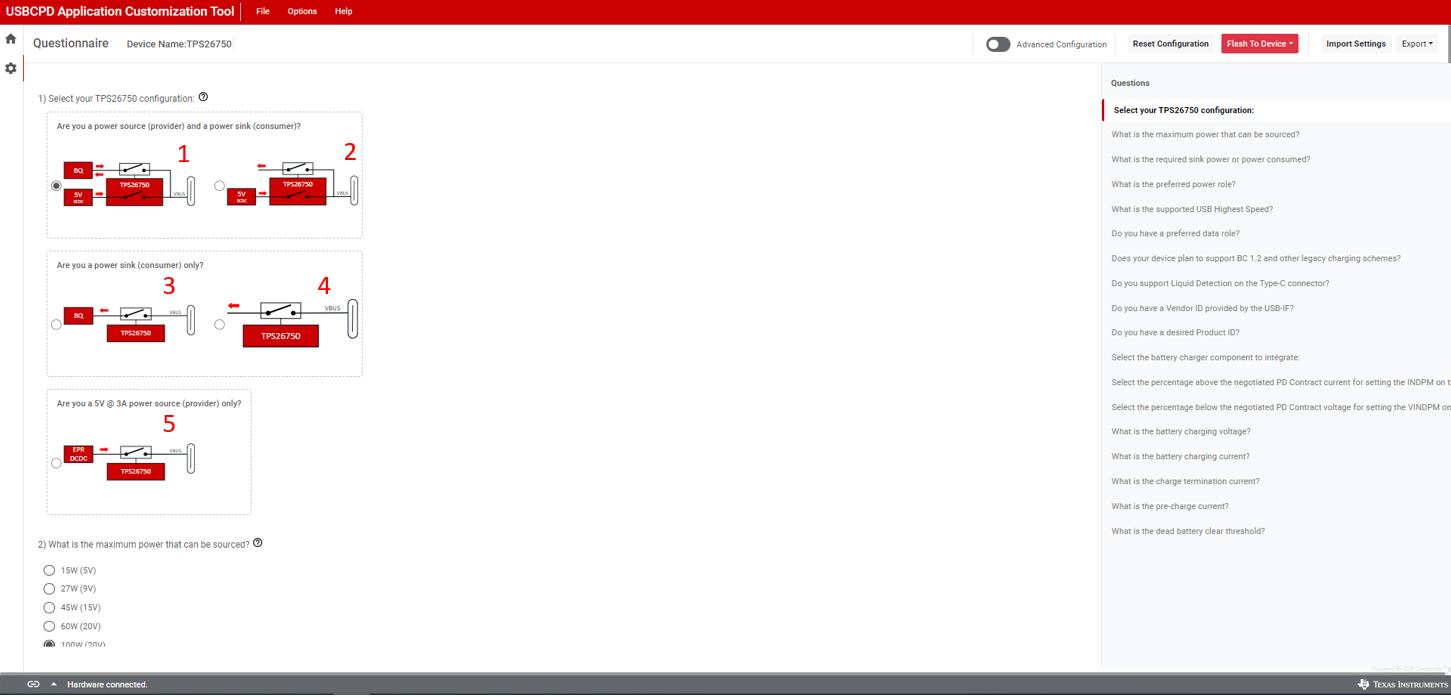SLVUCP8 September 2024 TPS26750
- 1
- Description
- Get Started
- Features
- Applications
- 6
- 1Evaluation Module Overview
- 2Hardware
-
3Software
- 3.1 Software Description
- 3.2 Software Installation
- 3.3 Software Development
- 3.4 Using the Application Customization Tool
- 4Application Specific Use Cases
- 5Hardware Design Files
- 6Additional Information
3.4.2 Selecting a Configuration
The first question of the GUI asks to select a configuration the TPS26750 is used for. The 5 configurations are separated into three main categories based on power role:
- Power Source (provider) and Power Sink (consumer), also referred to as Dual Role Power (DRP)
- Power Sink (consumer) only
- Power Source (provider) only
 Figure 3-2 Application Customization Tool
Configuration
Figure 3-2 Application Customization Tool
ConfigurationTable 3-1 TPS26750 Configuration
| Configuration Index | Power Role | BQ Support |
|---|---|---|
| 1 | Source and Sink (DRP) | Yes |
| 2 | Source and Sink (DRP) | No |
| 3 | Sink Only | Yes |
| 4 | Sink Only | No |
| 5 | Source Only | No |